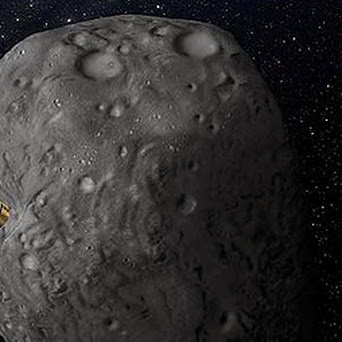Japanese scientists making ready to blast a crater in AN
asteroid to search out out what it's product of say they need with success
tested their new house cannon.
The Japan
region Exploration Agency (JAXA) aforementioned the large weapon would hearth a
metal bullet at the surface of asteroid 1999JU3 your time in 2018.
The Hayabusa-2, which is able to launch the weapon, can then
land on the surface and take samples of the newly-disturbed soil as a part of a
project finding out organic materials or for any sign of water.
Advertisement
"The Hayabusa-2 project is progressing as
planned," a JAXA representative aforementioned.
The craft will be ready to be carried into a house next year
by one among JAXA's dedicated H2A rockets, that area unit launched from
southern Japan.
The probe is flung on a flight that its operators hope can
take it into the trail of 1999JU3 four years later.
The unpoetically-named 1999JU3 is believed to be additional
probably than several asteroids to harbor the building blocks of life.
Once it's reached its destination, Hayabusa-2 can hover on
top of the asteroid to unleash the house cannon, that is meant to drift gently
towards the barren surface.
As the weapon floats down, Hayabusa-2 can build its manner
around to the opposite aspect of the asteroid, wherever it will shelter its
delicate device array from any flying detritus or shell.
With its Mothership safely out of the manor, the canon can
detonate it, hurling an outsized bullet-like object into the surface below it.
After the dirt has settled, Hayabusa-2 can come back to
examine the crater, touching down on the asteroid's surface wherever it'll take
up samples for analysis back on Earth.
The probe is predicted to search out its manner home your
time in 2020, carrying with it a valuable scientific load that's expected to be
confiscate on by scientists.
The pristine materials the blast can expose area unit a
necessary a part of the puzzle for researchers making an attempt to grasp
however planets are a unit shaped, and presumably facilitate them to find out
concerning the manner lifeforms might arise, JAXA said.
Hayabusa-2 could be a successor to the first
"Hayabusa", a deep-space probe that picked up asteroid dirt from a
potato-shaped house rock and came to Earth in 2010.
Scientists hope Hayabusa-2 can depend on the work of its
precursor, that was solely ready to collect surface dirt samples that would be
altered by years of exposure to the assorted kinds of energy it encountered in
the house.

0 comments:
Post a Comment